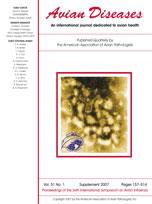Many different polymerase chain reaction (PCR) protocols have been used for detection and characterization of avian influenza (AI) virus isolates, mainly in research settings. Blind ring trials were conducted to determine the most sensitive and specific AI PCR protocols from a group of six European Union (EU) laboratories. In part 1 of the ring trial the laboratories used their own methods to test a panel of 10 reconstituted anonymized clinical specimens, and the best methods were selected as recommended protocols for part 2, in which 16 RNA specimens were tested. Both panels contained H5, H7, other AI subtypes, and non-AI avian pathogens. Outcomes included verification of 1) generic AI identification by highly sensitive and specific M-gene real-time PCR, and 2) conventional PCRs that were effective for detection and identification of H5 and H7 viruses. The latter included virus pathotyping by amplicon sequencing. The use of recommended protocols resulted in improved results among all six laboratories in part 2, reflecting increased sensitivity and specificity. This included improved H5/H7 identification and pathotyping observed among all laboratories in part 2. Details of these PCR methods are provided. In summary, this study has contributed to the harmonization of AI PCR protocols in EU laboratories and influenced AI laboratory contingency planning following the first European reports of H5N1 highly pathogenic AI during autumn 2005.
How to translate text using browser tools
1 March 2007
Identification of Sensitive and Specific Avian Influenza Polymerase Chain Reaction Methods Through Blind Ring Trials Organized in the European Union
M. J. Slomka,
V. J. Coward,
J. Banks,
B. Z. Löndt,
I. H. Brown,
J. Voermans,
G. Koch,
K. J. Handberg,
P. H. JØrgensen,
M. Cherbonnel-Pansart,
V. Jestin,
G. Cattoli,
I. Capua,
A. Ejdersund,
P. Thorén,
G. Czifra
ACCESS THE FULL ARTICLE

Avian Diseases
Vol. 51 • No. s1
March 2007
Vol. 51 • No. s1
March 2007
avian influenza
ring trial




